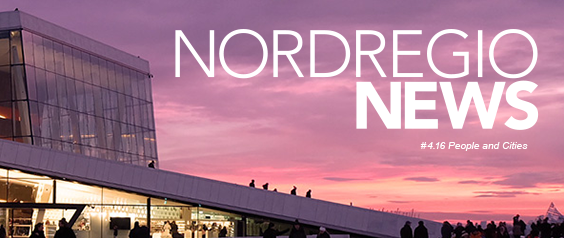Urban policies and projects that are expected to promote sustainability often focuses on the built environment and the technical infrastructure. Less attention is given to changing lifestyles and everyday practices, even though citizen and consumer behaviour have tremendous impacts on our cities. But including issues such as sustainable living and consumption patterns in the development of urban areas require adapted forms of urban governance and planning. During the last three years we have in collaboration with partners from Austria and the Netherlands explored these issues in a number of ways within the CASUAL project. We have in particular focused on new forms of inclusive urban governance and the notion of so called urban living labs.
WHAT IS AN URBAN LIVING LAB?
Urban living labs can be seen as a form of ‘experimental’ governance, because the rules of the game often are not defined in order to avoid restricting innovative and visionary thinking. In our research with the CASUAL project we have identified four key principles for urban living labs: co-creation, exploration, experimentation and evaluation.
Urban living labs should offer an inclusive, participatory and do-it-yourself setting for co-creation that engages citizens and local actors in the processes of shaping the city. They should also be places for exploration where actors in an open-minded way can pursue ideas without having a clearly defined aim or outcome and experiment with creative or provocative initiatives without the fear of long-term negative consequences should the initiatives fail to deploy as expected. But urban living labs should also have an impact, even if evaluation is not as straight-forward with more result-oriented initiatives.
Urban living labs as a planning practice or methodology have a number of merits in terms of defining innovative pathways for beyond business-as-usual thinking. However, in our research we have also identified risks associated with these forms of collectively organised initiatives. Urban living labs (as do other forms of governance) risk becoming arenas of unequal expectations, power games and conflicts. Caution must be taken to manage the inherent shortcomings of urban living labs with respect to democratic legitimacy, tendencies towards exclusiveness, and extreme temporality. Itis important to think about how these informal soft modes of governance relate to formal, hard modes of government.
But the core principles of urban living labs (co-creation, exploration, experimentation and evaluation) offer an analytical and theoretical framework for understanding and positioning various informal self-organizing initiatives in contemporary urban development. In the CASUAL project we used these four principles to analyse the exhibition Experiment Stockholm.
STOCKHOLM EXPERIMENTATIONS
Experiment Stockholm was an exhibition and a forum for exploring challenges and opportunities in the Stockholm region though different kinds of events that brought together different actors from different sectors and organisations. The public exhibition took place during fall 2015 and was curated by Färgfabriken, a Stockholm-based foundation for art, architecture and urbanism.
The public exhibition included both original artworks such as a liveable green house, a soundscape, a video installation and other art work that was developed during the exhibition in the main hall, and a more academically oriented project room. The former you enter with your body while the latter you enter with your mind. There were also activities outside in the close vicinity such as floating cultural house but also activities in other places in the city. A key feature of the exhibition was the different seminars, debates and workshops that took place during the exhibition. The exhibition was to a large degree the result of a number of projects, meetings, and other activities that had taken place during the preceding years between different project partners.
Nordregio was a project partner in Experiment Stockholm and Färgfabriken was a local partner in the CASUAL project. We researchers thus had direct access to the empirical field through our involvement in the preparation and implementation of the exhibition and we used participant observation as the main methodological approach but we also did interviews with a selection of the project partners. In our analysis we focused on the activities that included the project partners and was designated as *Experiments in the extensive programme for Experiment Stockholm.
Experiment Stockholm has offered a learning environment with many networking potentials, for members within the so called ‘experiments’, but also for other persons interested in the numerous seminars and events, as well as the artistic exhibition as such. Also, some of our respondents mentioned that the various activities have helped them think in a more comprehensive way about urban planning and thus overcome the prevailing silo mentality in urban planning, opening up avenues for cross-sectoral coordination.
Fundamental to setting-up Experiment Stockholm was fees from the project partners which included but municipalities and state authorities, research institutes, NGOs and private firms. This has of course been critical when considering this in terms of urban living labs and inclusive urban governance. The membership principle, included those with the willingness to spend their resources (money and time), but excluded others. As a consequence, the established temporary multi-disciplinary networks can be characterised by an exclusive, if not elitist, urbanist community within the Stockholm city-region. However, the different meetings and experiments have for example, highlighted the important role of more organisational issues including the role and performance of the facilitator as well as the moderator, in practicing ‘co-creation’ and ‘experimentation’ within multi-disciplinary network.
Article continues below


